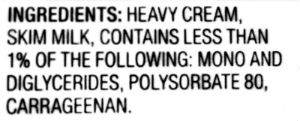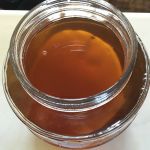 Most of us have probably heard of Kombucha Tea, made from fermented sweet tea. We make and drink it regularly (and it makes awesome cocktails). We also make milk and water kefir, two other probiotic and delicious beverages. After allowing it to languish in a cupboard for a year (really!), we pulled the Jun scoby out and re-started it.
Most of us have probably heard of Kombucha Tea, made from fermented sweet tea. We make and drink it regularly (and it makes awesome cocktails). We also make milk and water kefir, two other probiotic and delicious beverages. After allowing it to languish in a cupboard for a year (really!), we pulled the Jun scoby out and re-started it.
Jun tea, while similar to kombucha in some ways, is a distinctly different beverage. While kombucha is made with black or green tea (or a combination of these), sweetened with sugar, and fermented using finished kombucha tea from a previous batch plus the kombucha scoby, jun is made from green tea only, sweetened only with raw honey. A “mother” (scoby) is also floated in the brew. Continue reading “Another Probiotic Beverage Worth Exploring: Jun Tea”

 What in the world is carrageenan doing in heavy whipping cream?? When we buy “heavy whipping cream”, we expect that it contain only that – heavy whipping cream! Apparently, that’s just a fantasy in today’s food culture.
What in the world is carrageenan doing in heavy whipping cream?? When we buy “heavy whipping cream”, we expect that it contain only that – heavy whipping cream! Apparently, that’s just a fantasy in today’s food culture. We make kombucha tea in gallon barrel jars, with a batch being “harvested” every Sunday. Once bottled, the ‘booch sits in airtight bottles for a few days for a second ferment. It’s during this second ferment that additional flavorings may be added. The two week initial fermentation period is what seems to work best to achieve the flavor profile we like: slightly tart, but not vinegary. Some people let it go longer, but it can get pucker-you-up tart with time. Once it becomes too sour, there’s no going back.
We make kombucha tea in gallon barrel jars, with a batch being “harvested” every Sunday. Once bottled, the ‘booch sits in airtight bottles for a few days for a second ferment. It’s during this second ferment that additional flavorings may be added. The two week initial fermentation period is what seems to work best to achieve the flavor profile we like: slightly tart, but not vinegary. Some people let it go longer, but it can get pucker-you-up tart with time. Once it becomes too sour, there’s no going back.